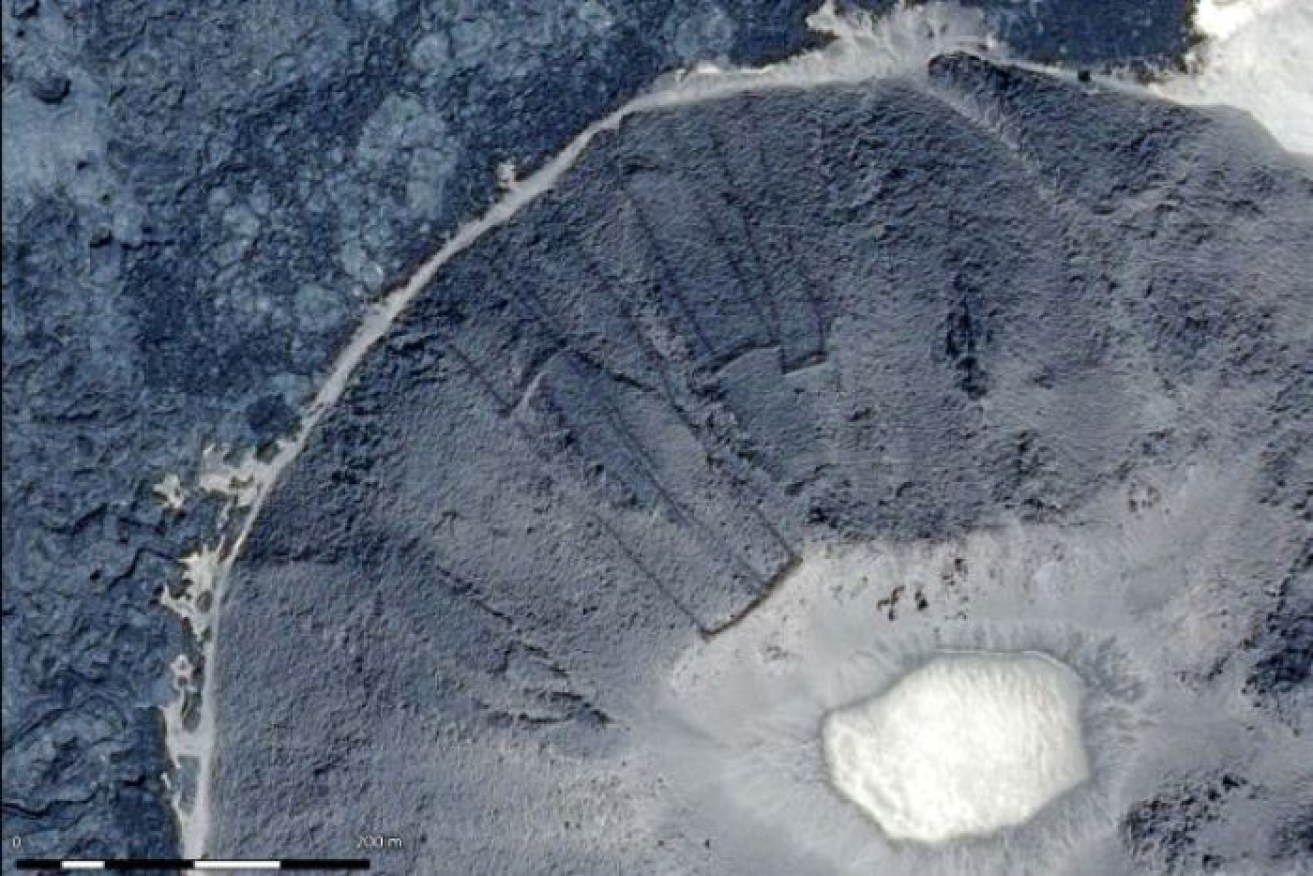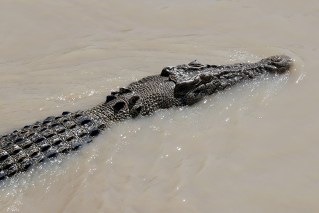Perth archaeologist uses Google Earth to discover mysterious ancient Saudi ‘gates’

The stone "gates" are easily visible from aerial images. Photo: Google Earth
High-resolution images from Google Earth have led to the discovery of hundreds of mysterious ancient structures scattered across the desert in Saudi Arabia – and all by an archaeologist in Perth who has never visited the area.
David Kennedy, professor of archaeology at the University of Western Australia, says the man-made structures built from stone are between 2000 and 9000 years old.
They are known as “gates” because their shape resembles traditional farm gates, but some are up to 500 metres long.
Professor Kennedy, who has undertaken extensive archaeological excavation in neighbouring Jordan over four decades but never visited Saudi Arabia, said the structures varied in size and were about 50 centimetres high.
However, their purpose and function remain a mystery.

Almost 400 of the “gates” have been found. Photo: Grant Scroggie/ABC
“I have no idea what they were used for and nobody else has been able to suggest a convincing explanation for them,” he said.
Professor Kennedy said his discovery came about by chance, after a Saudi doctor who was interested in the area’s history contacted him, having heard about his work in Jordan.
“He said ‘I’m interested in the heritage of my country, I’ve spotted on Google Earth that there are some rather strange structures in the lava fields and I went out with some friends to have a look’,” Professor Kennedy said.
“He sent the coordinates of them to me and I had a look and I was bowled over by them. They are not like anything else I’ve seen.”
He said the location of the gates, in the lava fields of an ancient volcano, made them easier to see from aerial imagery than from the ground.
“They are in extremely bleak, arid areas – very inhospitable, there’s not much vegetation and you wouldn’t think that our species would want to spend very much time [there] at all. But when you get up 500 feet or more, suddenly you can see that there are literally thousands of these stone-built structures,” he said.
While some of the structures, such as those known as “kites” for their kite-like shape, were used for herding animals, the 400 or so “gates” served no apparent function.

Stones lined up in a row on a stony ground. Photo: Grant Scroggie
“Initially I came across two or three and thought ‘that’s strange, I’ve never seen anything like that before’, and then we found some more and some more, and now we’ve found almost 400 of them,” he said.
Professor Kennedy said the availability of high-resolution images was making the study of archaeology more egalitarian.
“It has resulted in a literal explosion of information,” he said.
“Even 10 years ago if you wanted satellite imagery in high resolution like this you had to buy it at considerable cost, usually thousands of dollars, and you needed expertise to manipulate the data that you received.
“Now anybody can look at Google Earth and see for themselves.”
Professor Kennedy’s findings will be published in the journal Arabian Archaeology and Epigraphy next month.
-ABC








